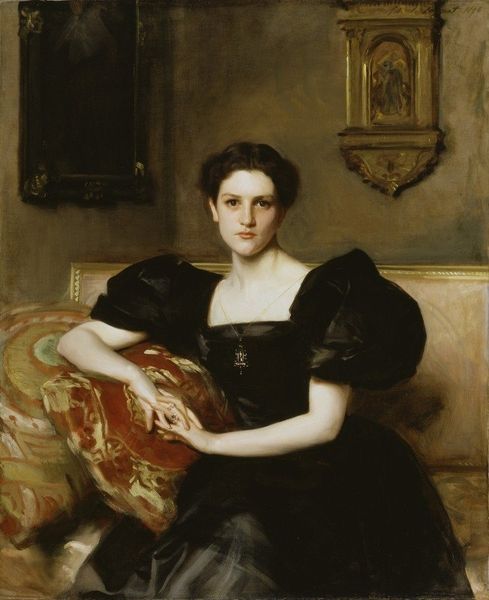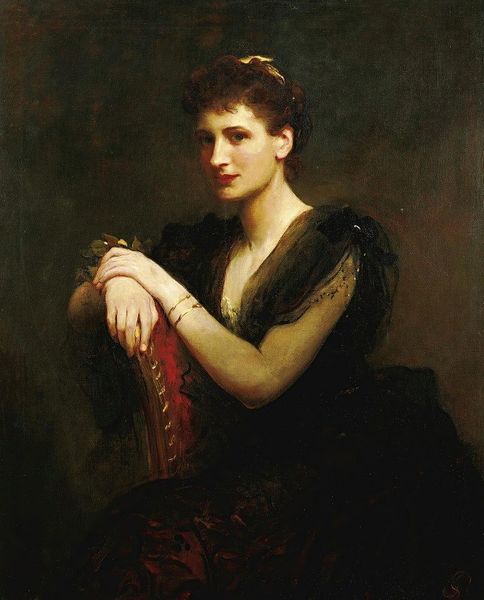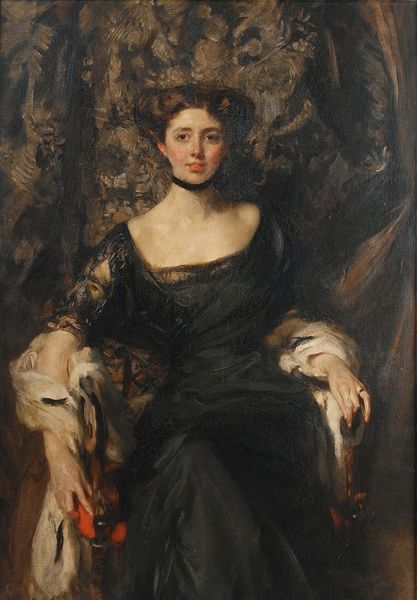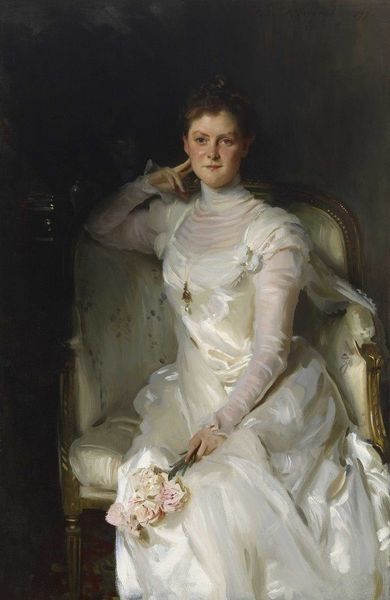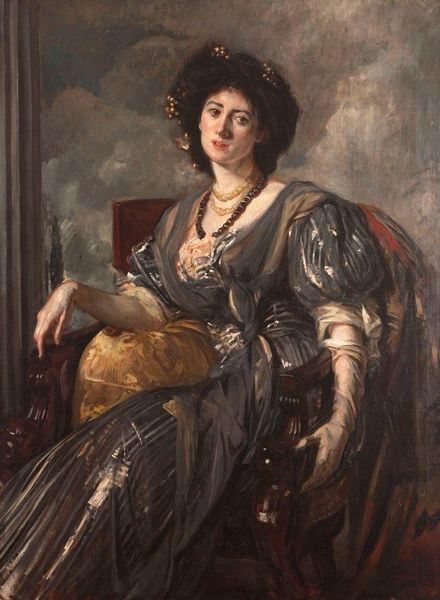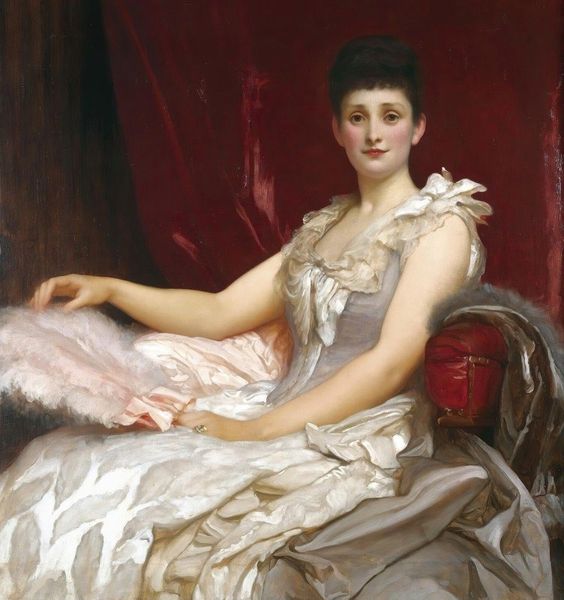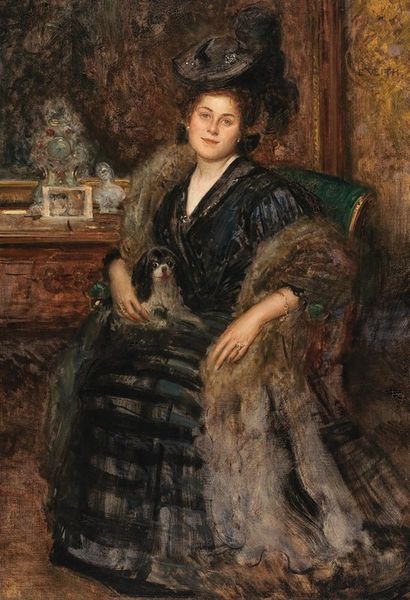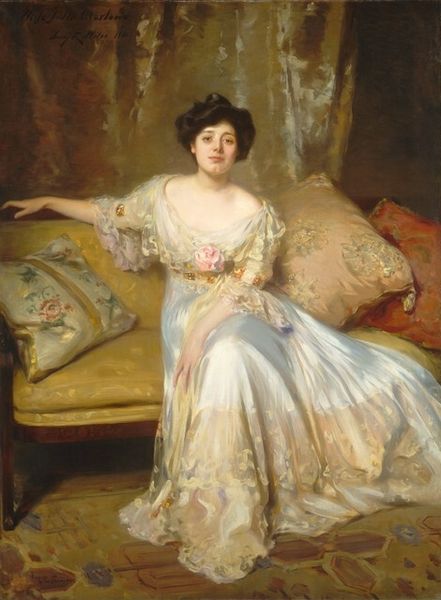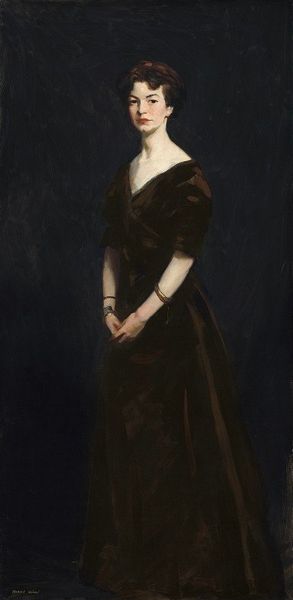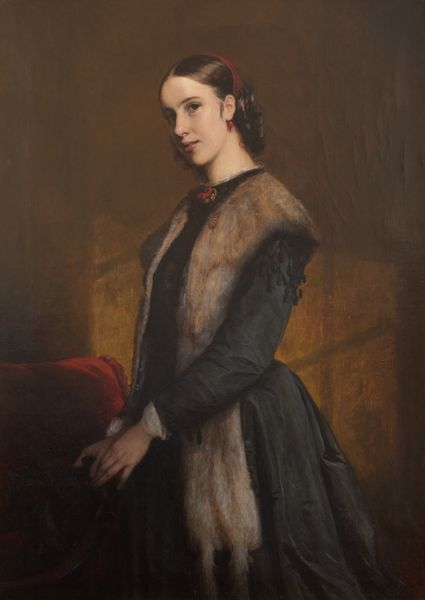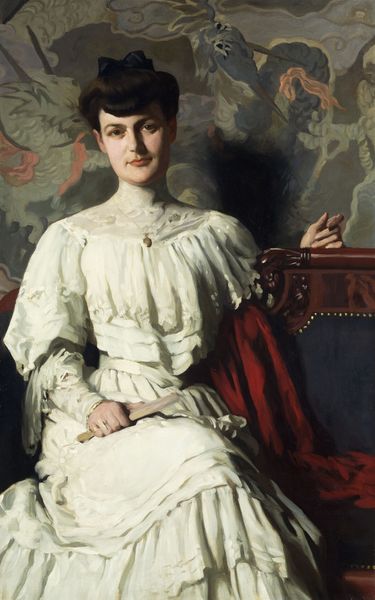
Copyright: Public Domain: Artvee
Editor: This is Pascal-Adolphe-Jean Dagnan-Bouveret’s "Portrait d’une élégante," from 1898, created using oil paint. It's quite striking, the way her dark dress contrasts with the pale, ornate chair. I'm curious about the woman's pensive expression. What kind of cultural story do you think the artist is trying to tell through her portrayal? Curator: Indeed, she is lost in thought, isn't she? Look at the way Dagnan-Bouveret contrasts her dark clothing with the lightness of the chair and her skin. The artist has created an enduring image using a powerful symbolic pairing. Do you notice any details, like jewelry, that subtly reinforce the idea of sophistication and status? Editor: I see the rings, yes, though she isn't laden with jewels. Is the somber tone suggestive of a specific event or social commentary of the era? Curator: It could be that black was the height of Parisian fashion. The way she poses for the painting makes the painting the defining representation of this individual. In those days, portraiture acted as social currency. Dagnan-Bouveret suggests she is self-possessed. What symbols resonate most strongly for you in relation to her posture? Editor: Perhaps the direct gaze. It's not inviting, but it isn't dismissive, either. The fact that the hand obscures the side of her face indicates her personal strength and thoughtful intent. Curator: Exactly. Those gestures reinforce her place in the world as more than just a beauty. Editor: This piece really makes you consider how portraiture cements ideas and values! Curator: And challenges them. This artist prompts us to consider how much individual style signifies in social identity.
Comments
No comments
Be the first to comment and join the conversation on the ultimate creative platform.
